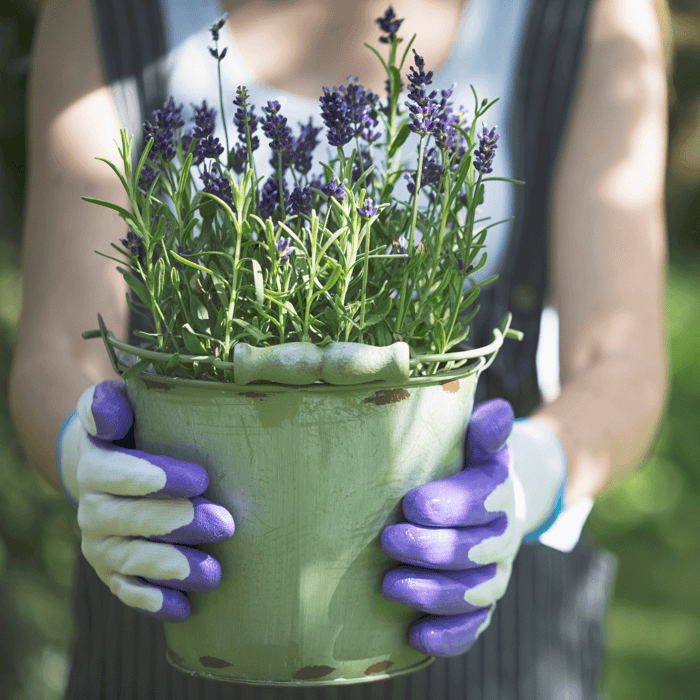Introduction: Growing Lavender in Pots
Lavender is a popular herb known for its fragrant blooms and calming properties. It's no wonder that many people are interested in growing it in their own gardens or homes. However, not everyone has access to a garden or outdoor space. Fortunately, lavender can also be grown in pots, making it an excellent option for those who want to enjoy this lovely plant even without a large garden. So, let's learn how to grow lavender in pots.
There are several benefits of growing lavender in pots. One of the most significant advantages is that it allows you to grow this herb even if you don't have a lot of space.
Lavender is also relatively low maintenance, making it an ideal plant for those new to gardening or with busy schedules. Another benefit of growing lavender in pots is that you can easily move the plants around as needed.
This can be especially useful if you live in an area with harsh winters or hot summers and must protect your plants from extreme conditions. Several varieties of lavender can be grown successfully in pots.
Some popular options include English lavender (Lavandula angustifolia), French lavender (Lavandula stoechas), and Spanish lavender (Lavandula dentata). Each variety has unique characteristics such as flower color, size, and fragrance.
So whether you want to add some beauty and fragrance to your patio or balcony or simply want to grow this versatile herb indoors, growing lavender in pots is an excellent option that offers plenty of benefits. Let's look at how to get started with this exciting project! Expand your herb garden and grow some of your favorite herbs in pots!
Choosing the Right Pot and Soil
Choosing the right pot and soil is essential for growing healthy lavender plants in pots. When selecting a pot, make sure it is large enough to accommodate the root system of your lavender plant. The ideal size for a lavender plant varies based on its variety; however, most plants require a container at least 12 inches deep and 16 inches wide.
In terms of material, there are several options to consider. Terracotta pots are popular because they breathe well and provide good drainage.
Plastic pots are lightweight and less expensive than terracotta, but they may not be as durable or breathable. Whichever type of pot you choose, ensure it has drainage holes in the bottom to prevent water from accumulating in the soil.
Lavender Seeds
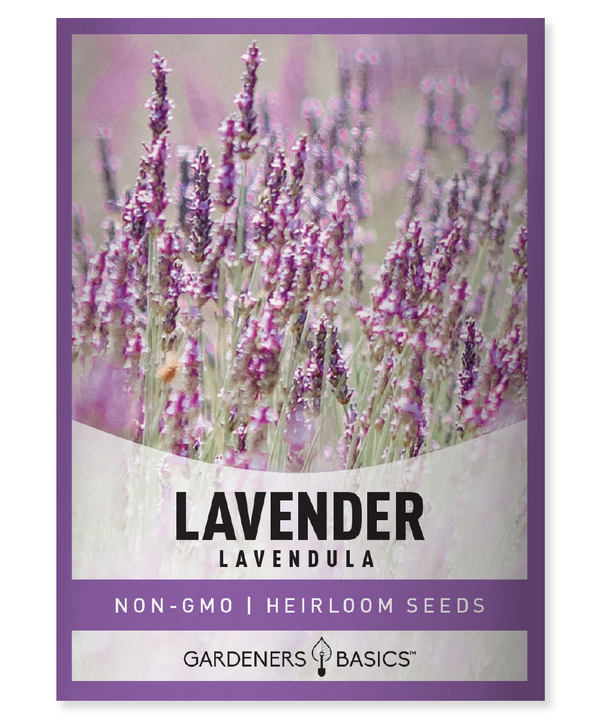
$2.49
Lavender Seeds - Heirloom, Non-GMO, Non-Hybrid, Open-Pollinated | Grow Aromatic Lavender at Home Transform your garden with our premium Lavender Seeds. Perfect for creating a fragrant, calming, and visually stunning outdoor or indoor space, our lavender seeds are heirloom, non-GMO,… read more
Well-Draining Soil: A Must-Have
Lavender plants require well-draining soil to thrive in pots. Soils that hold too much moisture can lead to root rot and other fungal diseases that can kill your lavender plant quickly. To improve drainage, you can create well-draining soil by amending your potting mix with coarse sand or perlite.
Avoid adding heavy materials like gravel or pebbles at the bottom of your pot. This can worsen drainage by creating a waterlogged layer at the base of your container. If you're uncertain how well your desired mix will drain, you can test it out before planting by pouring water into the potting mixture and observing how long it takes to drain out from its bottom hole(s).
The Ideal Soil pH
Lavender prefers soil with a pH between 6.5-7.5, which is slightly neutral to alkaline; however, if you're unsure about your soil's pH, it's best to test it out. You can find a soil testing kit at your local garden store or online.
If the pH of your soil is too low, add lime to increase its alkalinity; if it's too high, add sulfur to lower the pH. Choosing the right pot and well-draining soil are fundamental to growing healthy lavender plants in pots.
Remember that lavender is a Mediterranean plant that prefers well-drained soils similar to those found in its native habitat. You can enjoy beautiful blooms from your lavender plant for years with proper care and attention.
Planting Lavender in Pots
How to Plant Lavender Seeds or Cuttings
If you're starting from lavender seeds, sow them indoors about 6-10 weeks before the last frost date in your area. Sow the lavender seeds in seed-starting soil and cover them with a thin layer of soil.
Keep the soil moist and warm; you should see sprouts within a few weeks. Once the sprouts get their first set of true leaves, it's time to transplant them into their permanent home: your pot!
If you're using cuttings, take 3-4 inch cuttings from a healthy lavender plant (preferably one that hasn't bloomed yet). Strip off the lower leaves and dip the cut end into rooting hormone powder.
Then, stick the cutting into a damp potting soil mix and cover it with a plastic bag to create humidity. Keep it in indirect light for several weeks until roots develop.
When planting seeds or cuttings, use a well-draining soil mix of equal parts perlite, vermiculite, and peat moss. Fill your pot about two-thirds full with this mix.
Herbal Tea Seeds For Planting | 5 Variety Pack
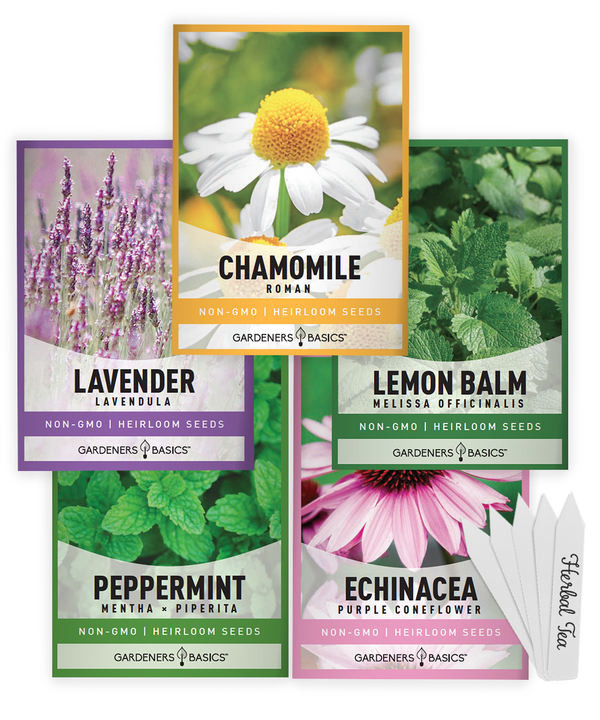
$9.95
Create a Homegrown Herbal Tea Garden with Our 5 Seeds Variety Pack Introducing our 5 Herbal Tea Seeds Variety Pack, a must-have for tea lovers and garden enthusiasts! This incredible collection includes five popular and aromatic herbs: Echinacea, Peppermint, Lavender, Chamomile,… read more
Properly Spacing Out Multiple Plants in One Pot
Lavender likes plenty of space to grow, so if you plan on planting more than one plant in a pot, space them out properly. A general rule of thumb is to leave at least 4 inches between each plant. Another important factor is choosing an appropriately sized pot for your number of plants.
If you're planting multiple lavender plants in one pot, choose a larger container (at least 16 inches in diameter) so that each plant has enough room to grow without competing for resources. Once you've determined how many plants will fit comfortably in your chosen pot, dig a hole for each plant and gently place it in the hole.
Backfill the soil around the plant and firm it down gently. Make sure to water the plants thoroughly after planting to help settle the soil.
Planting lavender in pots is a great way to grow this fragrant herb, even if you don't have access to a garden. Whether starting from seeds or cuttings, use a well-draining soil mix and space out your plants properly to encourage healthy growth.
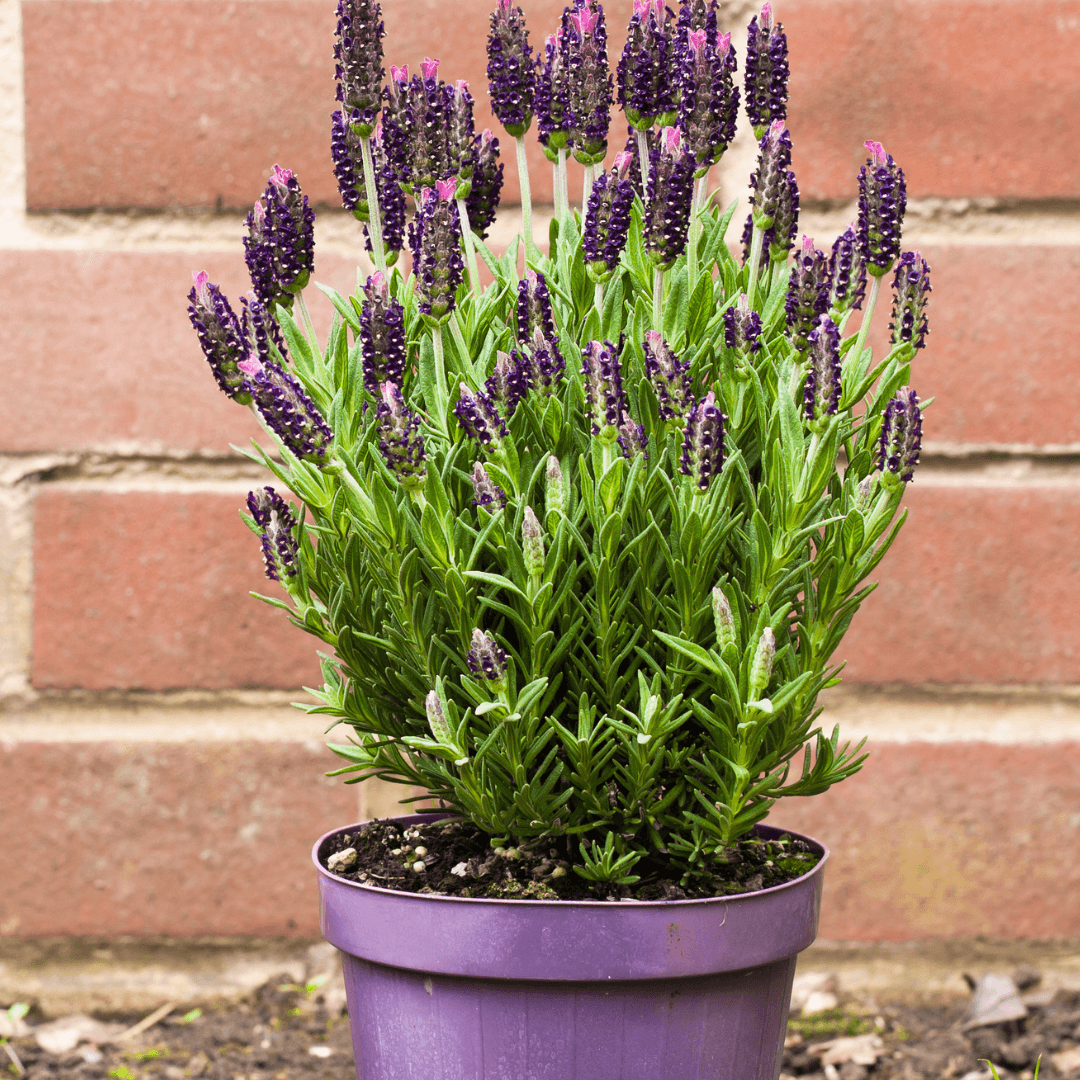
Watering and Fertilizing Lavender
Now that your lavender is planted in a pot with well-draining soil, it's time to talk about proper watering. Lavender plants are native to the Mediterranean region and are used in hot, dry conditions. As such, it's important not to overwater them.
Overwatering can lead to root rot and other diseases. A good rule of thumb is to water your lavender once a week or whenever the top inch of soil feels dry.
When you water your plant, thoroughly saturate the soil around the roots. Avoid getting water on the leaves, which can lead to fungal diseases.
If you live in an area with high humidity or frequent rain, you may need to adjust your watering schedule accordingly. It's also important not to let your lavender plant completely dry out, which can cause stress and affect its growth.
Fertilizing Lavender Plants
Lavender plants don't require much fertilizer but benefit from a small amount applied once or twice a year. When new growth begins, use a balanced fertilizer with an NPK ratio of 10-10-10 or 5-5-5 in spring or early summer.
Be careful not to apply too much fertilizer as this can lead to excessive growth, making your lavender plant less fragrant and more susceptible to disease and pest problems. If you prefer organic fertilizers, consider using compost tea or fish emulsion instead of chemical fertilizers.
Troubleshooting Lavender Plant Problems
If you notice any yellowing leaves on your lavender plant, it may be a sign that it needs more nutrients. In this case, apply a slow-release organic fertilizer according to package instructions. If you notice any pests or diseases on your lavender plant, remove infected leaves and flowers immediately to prevent the problem from spreading.
You can also use organic pest control methods like neem oil or soap spray to control common pests like aphids and spider mites. Following proper watering and fertilizing guidelines, you can grow healthy and fragrant lavender plants in pots that will brighten your garden space.
Popular Herb Seeds for Planting | 35 Variety Pack
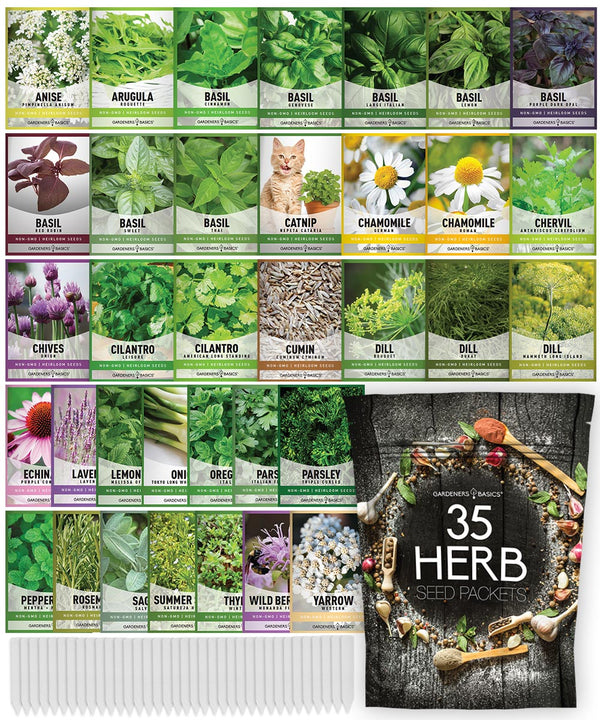
$29.95
$49.95
Heirloom, non-GMO herb seeds for indoor and outdoor home gardens! Introducing our 35 Herb Seeds Variety Pack, the ultimate selection for any herb garden enthusiast! This premium assortment includes heirloom herb seeds that are non-hybrid, open-pollinated, and non-GMO, ensuring you get only… read more
Caring for Lavender Plants in Pots
Common Pests and Diseases that Affect Lavender Plants
Despite its hardiness, lavender plants are susceptible to a few pests and diseases. One common problem is root rot when the soil stays too moist for too long.
To prevent this, ensure your pot has drainage holes and avoid over-watering your lavender plants. Another pest that can affect lavender is aphids, tiny insects that suck sap from the plant's leaves and stems.
You can control them by spraying your plants with water, dish soap, or insecticidal soap. Spittlebugs are another pest to watch out for.
These insects produce a foamy substance around themselves for protection, making it difficult to spot them on your plants. If you see white foam on your lavender, gently rinse it with water and inspect the plant for spittlebugs.
Pruning Lavender for Healthier Growth
Pruning is important in caring for lavender plants as it helps promote bushier growth and prevent woody stems. You should prune your lavender at least once a year in the springtime before new growth appears. Use clean pruning shears to remove about one-third of the plant's height and cut just above a leaf node.
Deadheading - removing spent flower heads - will also help keep your lavender looking its best and promote more blooms throughout the season. Simply snip off the spent flowers using clean scissors or pruning shears.
Harvesting Lavender
The best time to harvest lavender is when about half of the flower buds on each stem have opened fully but before they wilt or turn brown. Cut stems at least 6 inches long using clean scissors or pruning shears.
After harvesting, hang your lavender upside down in a warm, dry place with good air circulation. Once the flowers are completely dry, strip them off the stems and store them in an airtight container away from light and heat.
With proper care, your lavender plants will provide you with fragrant blooms for many years. By staying on top of pruning and watching for pests and diseases, you'll be able to enjoy the beauty and aroma of this wonderful plant in your home or garden.
Herb Seed Assortment | 15 Variety Pack
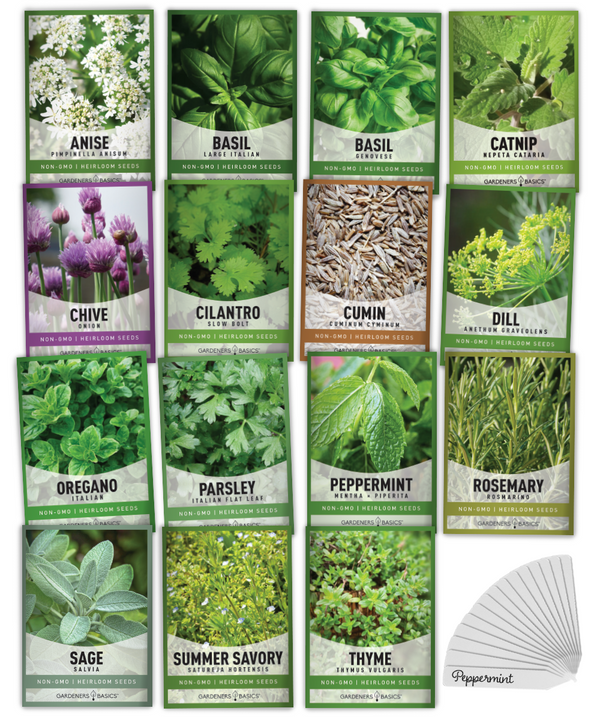
$19.95
Unlock the Power of Homegrown Herbs: 15 Heirloom Herb Seeds for Sustainable Gardening Introducing our 15 Herb Seeds Variety Pack—the ultimate collection for any home gardener, herbalist, or culinary enthusiast looking to grow fresh, flavorful herbs. Each of the 15 herb… read more
Conclusion How to Grow Lavender in Pots
Summarize key points about growing lavender in pots
Growing lavender in pots is a beautiful addition to your home or garden and an easy and rewarding way to cultivate this fragrant herb. Remember to choose the right pot size, material, and well-draining soil. When planting, space out multiple plants properly and water them accordingly.
Lavender plants don't need much fertilizer but can benefit from it occasionally. Caring for lavender plants is also important.
Look for common pests and diseases, such as spider mites or root rot, and prune regularly to encourage new growth. Deadheading spent flowers will prolong the life of your plant while harvesting flowers at the right time will provide you with fragrant blooms that can be used in various ways.
Encourage readers to try growing their own lavender at home
Growing your lavender can be a fun and rewarding experience for anyone interested in herbs or gardening. Proper care makes it relatively easy to grow from seedlings or cuttings, even if you're short on outdoor space.
Lavender's soothing scent has been known to have calming effects on the mind and body, making it a wonderful addition to any living space. So why not give it a try?
Start with one plant or several varieties of different colors for a full spectrum of beauty and aroma. Be patient and persistent with care – you'll be rewarded with abundant blooms that will last throughout the summer months.
Growing lavender in pots is an excellent way to add beauty and fragrance to your home or garden without much effort. With consistent care, these hardy plants are sure to thrive year after year – providing visual appeal and therapeutic benefits for all who enjoy them!
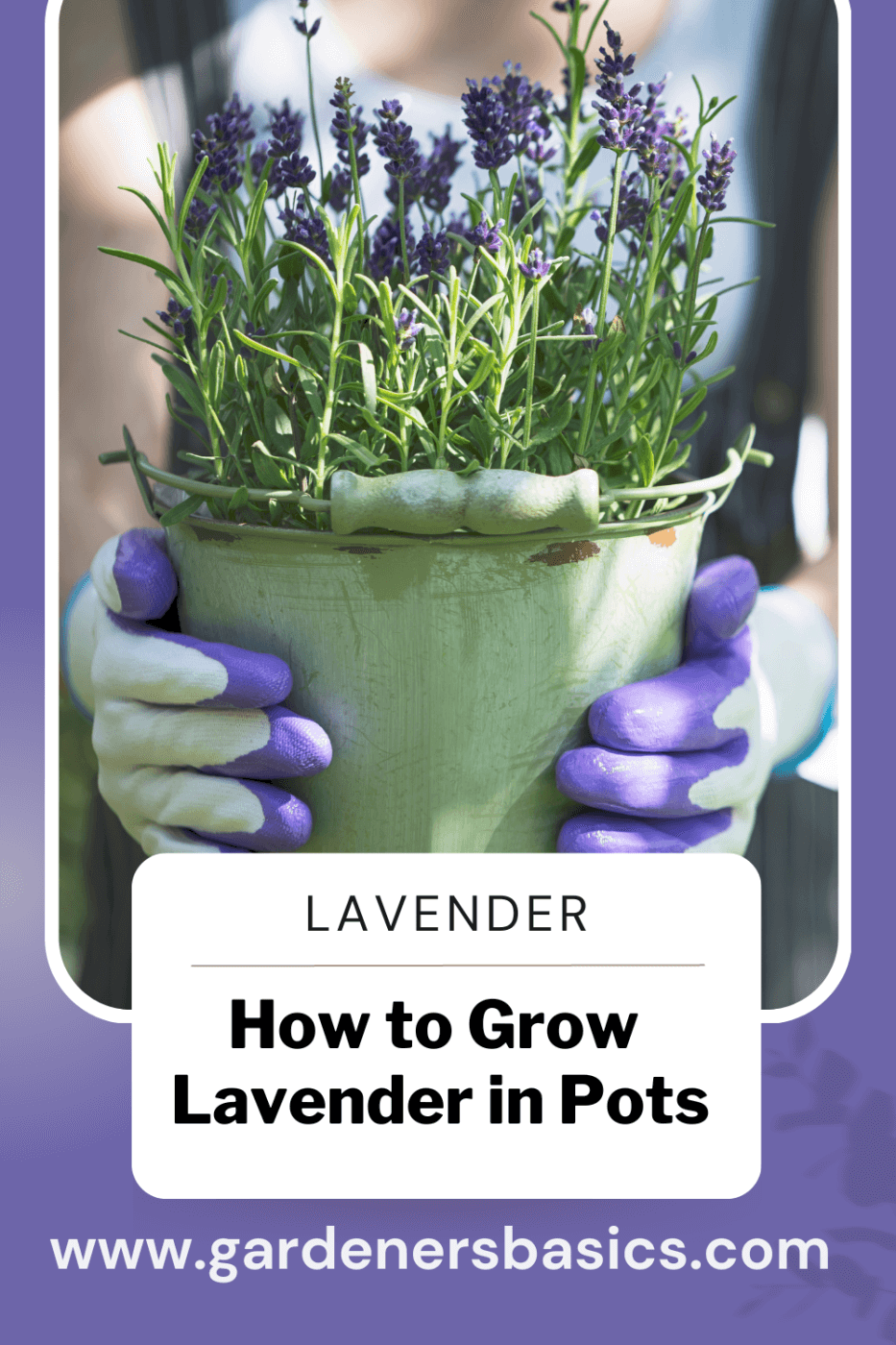 Frequently Asked Questions about How to Grow Lavender in Pots
Frequently Asked Questions about How to Grow Lavender in Pots
1. Can lavender be grown in pots?
Yes, lavender can be successfully grown in pots. In fact, growing lavender in containers can provide the ideal conditions for this plant, such as well-drained soil and controlled watering. Container growing also allows you to move your lavender plants to sunnier locations or indoors during extreme weather conditions.
2. What type of pot is best for growing lavender?
Choose a pot made from a breathable material like terracotta or clay, as these materials promote better drainage and aeration for the roots. Ensure the pot is at least 12-16 inches (30-40 cm) in diameter and has drainage holes to prevent waterlogging.
3. What type of soil should I use for potted lavender?
Lavender thrives in well-drained, slightly alkaline soil with a pH between 6.7 and 7.3. Use a high-quality, well-draining potting mix, and consider adding perlite, coarse sand, or small gravel to improve drainage.
4. How much sunlight does potted lavender need?
Lavender plants require at least 6-8 hours of direct sunlight daily to grow and produce flowers. If you're growing lavender indoors, place it near a sunny window or use supplemental grow lights to provide adequate light.
5. How often should I water my potted lavender?
Water your potted lavender when the soil's top 1-2 inches (2.5-5 cm) feels dry. Lavender prefers slightly dry conditions, so be careful not to overwater. In general, water your plant once or twice a week, depending on the pot size and climate.
6. How do I fertilize my potted lavender?
Lavender does not require heavy fertilization. Use a slow-release, balanced fertilizer (like 10-10-10) at planting time and once more during the growing season. Alternatively, you can use a liquid fertilizer diluted to half-strength once a month.
7. When should I prune my potted lavender?
Prune your lavender plants in the spring, just as new growth begins. Remove any dead, damaged, or crossing branches and shape the plant by cutting back approximately one-third of the previous year's growth.
8. Can I grow lavender indoors year-round?
You can grow lavender indoors, provided you have a sunny spot, or use grow lights to ensure the plant receives enough light. However, you may need to adjust your watering schedule and increase humidity around the plant to mimic outdoor conditions.
9. What are some common pests and diseases that affect potted lavender?
Lavender plants are relatively pest-resistant but can be susceptible to aphids, whiteflies, and spider mites. Diseases like root rot and fungal infections can occur due to overwatering or poor drainage. Ensure you provide proper care and keep an eye out for any issues.
10. Can I propagate lavender from cuttings?
Yes, lavender can be propagated from semi-hardwood cuttings taken in late summer or early fall. Remove a 3-5 inch (7.5-12.5 cm) cutting from a healthy, non-flowering stem, strip the lower leaves, dip the end in rooting hormone, and plant it in a well-draining potting mix. Keep the cutting moist and place it in a bright, warm location until roots develop.



